Published on: 10/19/2015IST
400-Year-Old Colonial Church Emerges From Waters In Mexico
A 400-year-old church submerged in a reservoir in the southern Mexican state of Chiapas has emerged due to a drought in the region that has reduced water levels by 25 meters (82 feet). Local fishermen have been taking visitors onto the Grijalva river to visit the church, which was submerged by a dam built in 1966 to form the Nezahualcoyotl reservoir. The church has emerged twice since the dam was built.
The 16-meter-tall church, known as the Temple of Santiago (or of Quechula) was built some time in the 16th century but “was abandoned due the big plagues of 1773-1776,” Mexican architect Carlos Navarrete told AP News. The church was built due to its position along an important highway built and used by Spanish conquistadors. “It was a church built thinking that this could be a great population center, but it never achieved that,” Navarrete said. “It probably never even had a dedicated priest.” The church is also surrounded by the submerged town of Quechula.
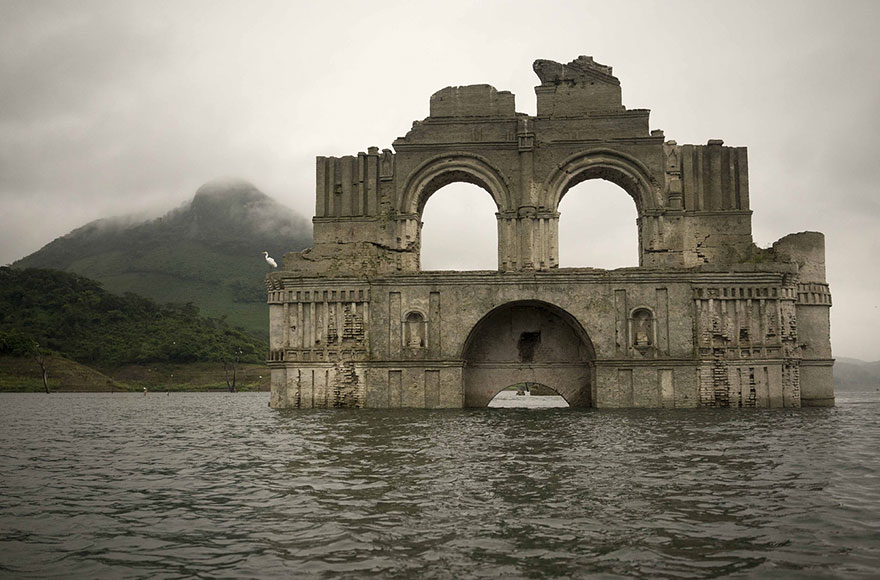
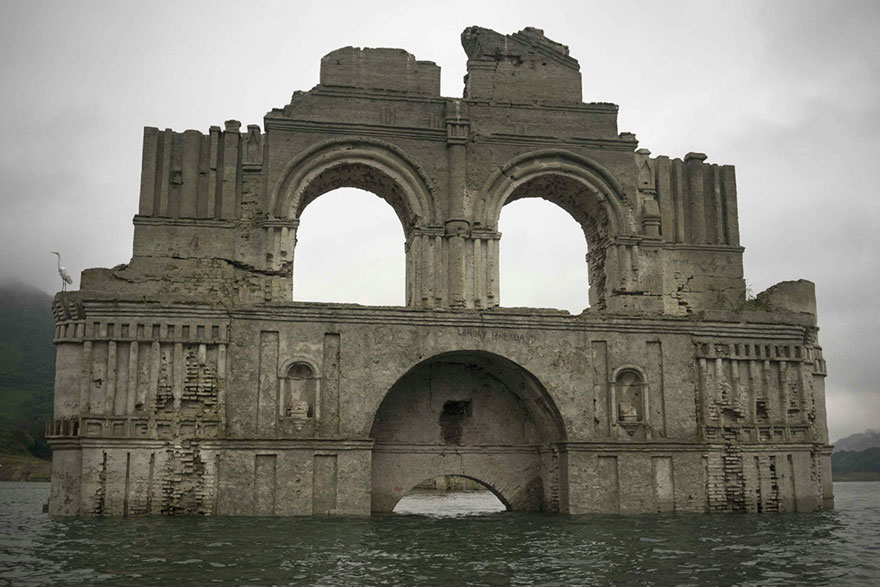
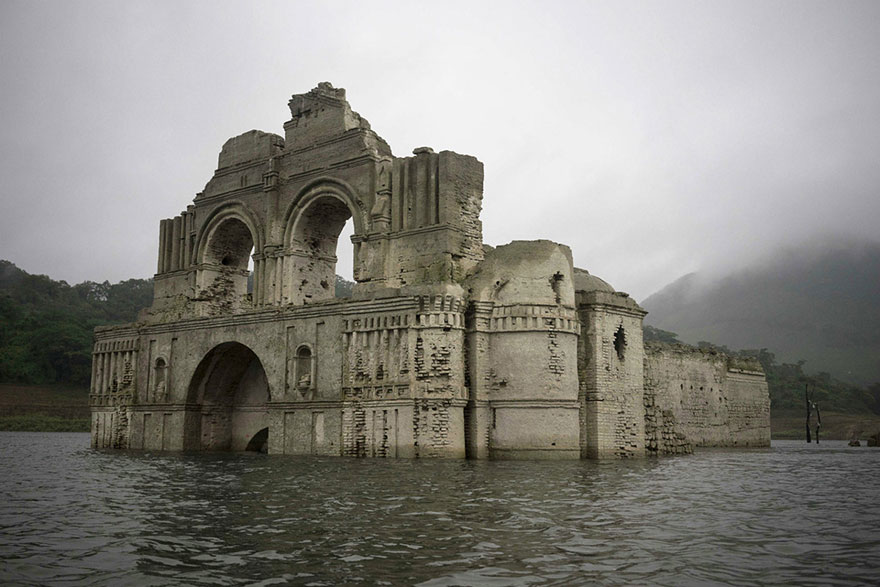
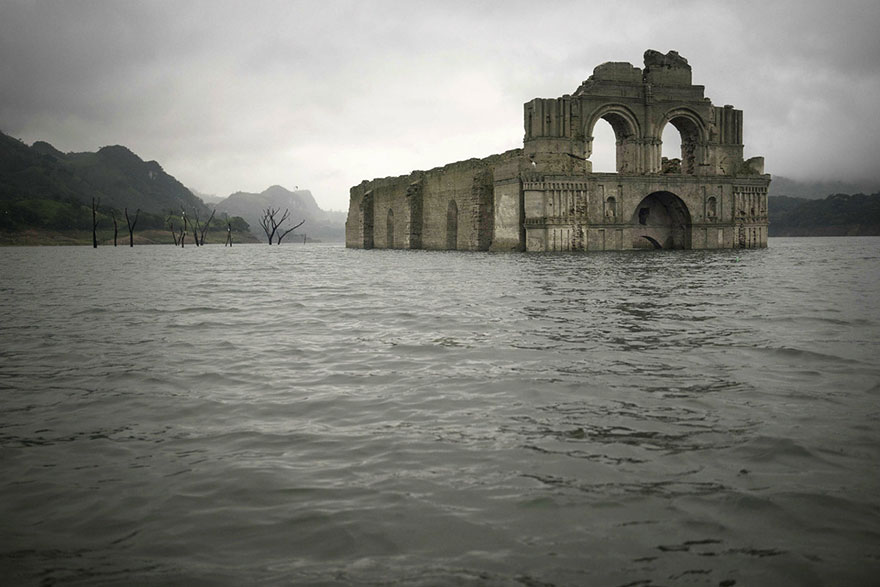
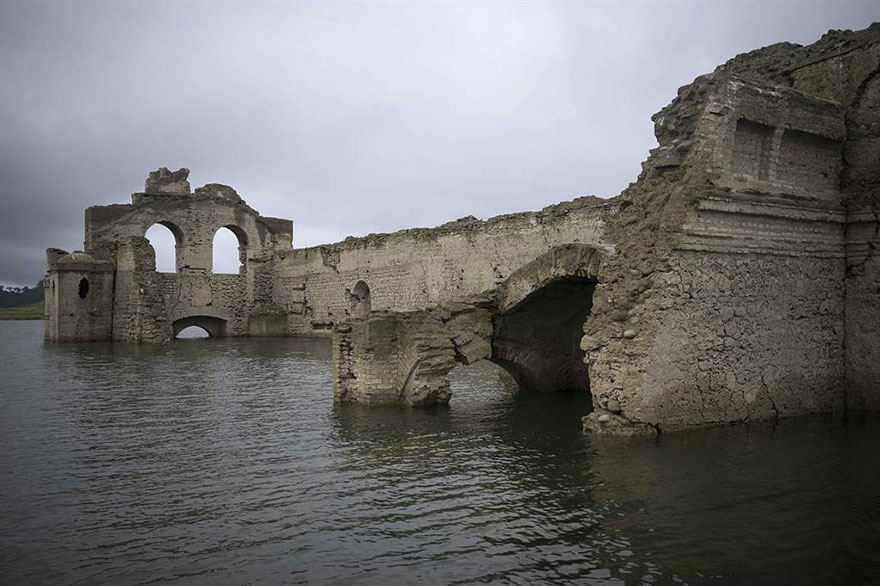
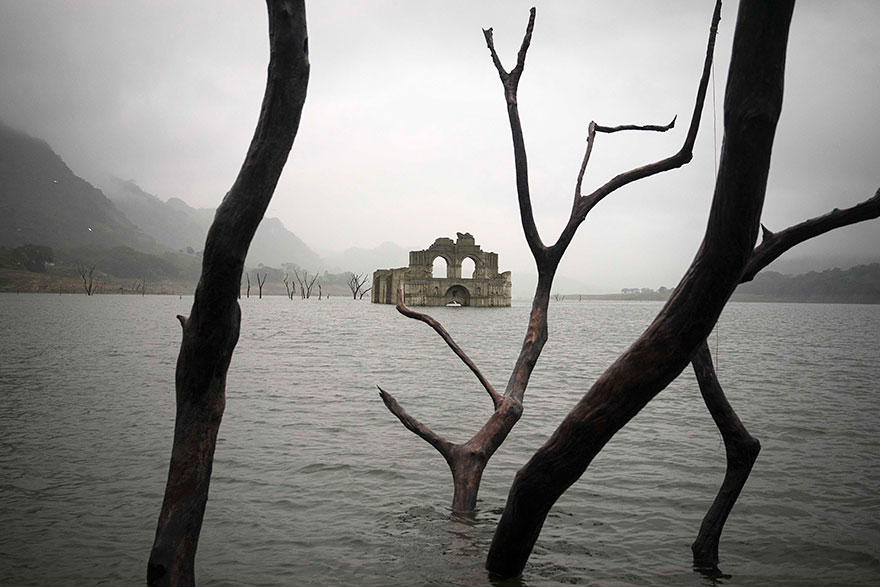
10/19/2015 | | Permalink
